
Hue: The Heartbeat of Vietnam's Imperial Legacy
Discover Hue: A Journey Through Vietnam's Imperial Past and Culinary Delights. Explore Historic Sites, Serene Landscapes, and a Unique Blend of Tradition and Modernity.
Nestled on the banks of the Perfume River, Hue is a city brimming with history and charm. As the ancient capital of Vietnam, Hue offers a unique blend of old-world grandeur and serene landscapes. The city's most iconic landmark, the Imperial City, is a UNESCO World Heritage site. Walking through its majestic gates, you can almost hear the whispers of the past. The palaces, temples, and gardens are a testament to the city's regal history. Beyond the Imperial City, Hue boasts many treasures. The Thien Mu Pagoda, with its seven stories, stands as the tallest religious building in Vietnam. It offers stunning views of the river and surrounding landscapes. The Tombs of the Emperors are another must-visit, with each one telling its own story through elaborate designs and peaceful surroundings. Hue is also a culinary haven. The city's cuisine is known for its unique flavors and traditional dishes. Don't miss trying Bun Bo Hue, a spicy beef noodle soup that captures the essence of central Vietnamese cooking. The local markets are vibrant places to experience the daily life of the city's residents and sample fresh produce and street food. Finally, Hue's natural beauty is captivating. Take a boat ride along the Perfume River at sunset, or explore the lush countryside with its verdant rice paddies and picturesque villages. Hue is a city that invites you to slow down, soak in its beauty, and connect with its rich cultural heritage.
Local tips in Hue
- Visit the Imperial City early in the morning to avoid the crowds and the heat.
- Try local dishes like Bun Bo Hue at street food stalls for an authentic taste.
- Take a boat tour on the Perfume River at sunset for beautiful views and a peaceful experience.
- Rent a bicycle to explore the countryside and nearby villages.
- Visit the local markets for fresh produce and unique souvenirs.
- Wear comfortable shoes as you will be doing a lot of walking while exploring historical sites.
Neighbourhoods in Hue
Hue: The Heartbeat of Vietnam's Imperial Legacy
Nestled on the banks of the Perfume River, Hue is a city brimming with history and charm. As the ancient capital of Vietnam, Hue offers a unique blend of old-world grandeur and serene landscapes. The city's most iconic landmark, the Imperial City, is a UNESCO World Heritage site. Walking through its majestic gates, you can almost hear the whispers of the past. The palaces, temples, and gardens are a testament to the city's regal history. Beyond the Imperial City, Hue boasts many treasures. The Thien Mu Pagoda, with its seven stories, stands as the tallest religious building in Vietnam. It offers stunning views of the river and surrounding landscapes. The Tombs of the Emperors are another must-visit, with each one telling its own story through elaborate designs and peaceful surroundings. Hue is also a culinary haven. The city's cuisine is known for its unique flavors and traditional dishes. Don't miss trying Bun Bo Hue, a spicy beef noodle soup that captures the essence of central Vietnamese cooking. The local markets are vibrant places to experience the daily life of the city's residents and sample fresh produce and street food. Finally, Hue's natural beauty is captivating. Take a boat ride along the Perfume River at sunset, or explore the lush countryside with its verdant rice paddies and picturesque villages. Hue is a city that invites you to slow down, soak in its beauty, and connect with its rich cultural heritage.
When is the best time to go to Hue?
Iconic landmarks you can’t miss
Hue Historic Citadel
Discover the majestic Hue Historic Citadel, a UNESCO World Heritage site showcasing the rich history and architectural beauty of Vietnam's imperial past.

Đại Nội
Discover the majestic Đai Nội, a UNESCO World Heritage site in Hue, Vietnam, showcasing the splendor of the Nguyen Dynasty's historical architecture.

Thien Mu Pagoda
Discover the tranquil beauty of Thien Mu Pagoda, a historic Buddhist temple in Hue, Vietnam, offering stunning views and rich cultural experiences.
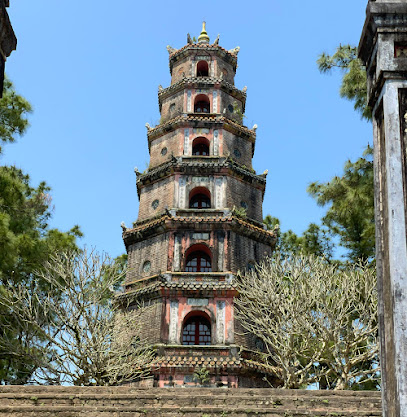
Mausoleum of Emperor Khai Dinh
Explore the stunning Mausoleum of Emperor Khai Dinh, a unique blend of Vietnamese and French architecture nestled in the hills of Hue.

Mausoleum of Emperor Tu Duc
Explore the stunning Mausoleum of Emperor Tu Duc, a historical gem in Hue, Vietnam, where rich culture and serene landscapes await.
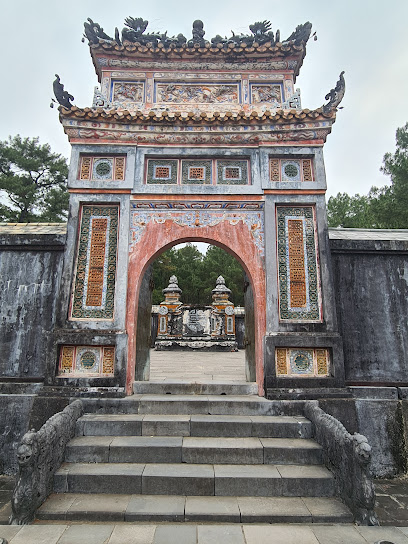
Mausoleum of Emperor Minh Mang
Explore the majestic Mausoleum of Emperor Minh Mang, a historical landmark in Hue, Vietnam, reflecting the rich cultural heritage of the Nguyen Dynasty.

Maison Trang
Discover the authentic flavors of Vietnam at Maison Trang, a hidden gem in Hue serving traditional dishes in a cozy atmosphere.

An Dinh Palace
Discover the rich history and breathtaking architecture of An Dinh Palace in Hue, Vietnam, a must-visit destination for history lovers and travelers.

Dong Ba Market
Discover the vibrant essence of Hue at Dong Ba Market, a cultural hub offering fresh produce, local delicacies, and unique handcrafted souvenirs.

Phu Cam Cathedral
Explore the stunning Phu Cam Cathedral in Hue, Vietnam, a blend of Gothic architecture and spiritual tranquility, perfect for travelers seeking cultural richness.
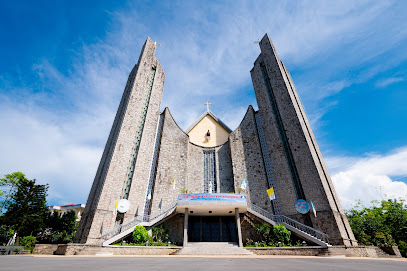
Meridian Gate
Discover the grandeur of the Meridian Gate in Hue, Vietnam, a stunning monument that opens the door to the rich history of the Nguyen Dynasty and the Imperial City.

Chùa Từ Hiếu
Explore Chùa Từ Hiếu, a tranquil Buddhist temple in Hue, Vietnam, where spirituality and nature harmoniously intertwine for an unforgettable experience.

Hue Night Walking Street
Discover the vibrant atmosphere of Hue Night Walking Street, a cultural haven filled with delicious street food, local crafts, and captivating performances.
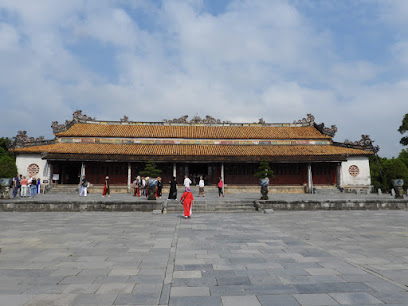
Nguyen Dinh Chieu Walking Street
Discover the vibrant Nguyen Dinh Chieu Walking Street in Hue, Vietnam, where local culture, delicious food, and artisan crafts come together in a lively evening atmosphere.

Hue Museum of Royal Antiquities
Discover the rich history of Vietnam at the Hue Museum of Royal Antiquities, featuring royal artifacts from the Nguyen Dynasty, a must-visit for culture lovers.

Unmissable attractions to see
Hue Imperial City
Explore Hue Imperial City, a UNESCO World Heritage site, rich in history and stunning architecture in Thua Thien Hue, Vietnam.

Thien Mu Pagoda
Discover the spiritual heart of Vietnam at Thien Mu Pagoda, a stunning Buddhist temple overlooking the tranquil Perfume River.

Mausoleum of Emperor Khai Dinh
Explore the intricate beauty of the Mausoleum of Emperor Khai Dinh, a historical gem blending Vietnamese tradition and French elegance in Hue, Vietnam.

An Dinh Palace
Explore An Dinh Palace in Hue, Vietnam: A historical wonder showcasing exquisite architecture and the rich cultural heritage of the Nguyen Dynasty.

Vong Canh Hill
Explore Vong Canh Hill, a stunning park in Hue, Vietnam, offering breathtaking views, rich history, and a serene escape into nature.

Hue Night Walking Street
Discover the vibrant Hue Night Walking Street, where local cuisine, crafts, and culture come together to create an unforgettable evening experience in Vietnam.

Chùa Từ Hiếu
Explore Chùa Từ Hiếu, a serene Buddhist temple in Hue, Vietnam, where tranquility meets rich cultural heritage in a stunning natural setting.

Nguyen Dinh Chieu Walking Street
Discover the vibrant energy of Nguyen Dinh Chieu Walking Street in Hue, Vietnam, where culture, food, and local crafts come together.

Huyen Khong Son Thuong Pagoda
Experience the serenity and cultural richness of Huyen Khong Son Thuong Pagoda in Vietnam, a peaceful retreat for spiritual seekers and nature lovers.

Hue Museum of Royal Antiquities
Discover the grandeur of Vietnam's royal history at the Hue Museum of Royal Antiquities, featuring exquisite artifacts and rich cultural insights.

Elephant Springs
Experience the enchanting beauty of Elephant Springs in Thua Thien Hue, a serene ecological park with stunning waterfalls and crystal-clear pools.
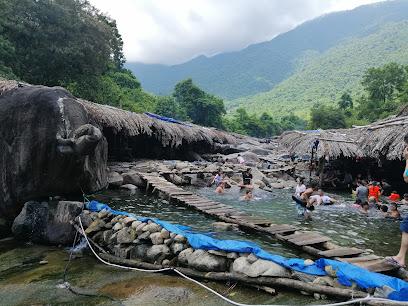
Thuong Bac Park
Experience the tranquil beauty of Thuong Bac Park in Hue, Vietnam, a perfect retreat for relaxation and recreation amidst nature's splendor.

February 3 Park
Discover tranquility and culture at February 3 Park, a serene escape in Huế, Vietnam, perfect for relaxation and exploration.

Thien An Monastery
Explore the serene beauty of Thien An Monastery, a stunning nunnery in Thua Thien Hue, Vietnam, where spirituality meets tranquil nature.

Tam Giang Lagoon
Experience the tranquil beauty of Tam Giang Lagoon, a stunning natural wonder in Thua Thien Hue, Vietnam, rich in culture and biodiversity.

Essential places to dine
Quán Hạnh
Discover authentic Vietnamese flavors at Quán Hạnh in Huế - a culinary gem offering traditional dishes in a cozy atmosphere.
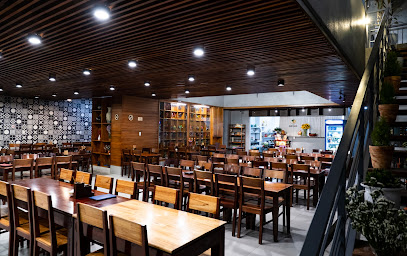
Madam Thu Restaurant - Taste of Hue
Discover the flavors of Hue at Madam Thu Restaurant - where traditional Vietnamese cuisine meets warm hospitality.

Nook Eatery-Breakfast to Burgers
Discover Nook Eatery in Huế - A delightful restaurant serving everything from breakfast classics to gourmet burgers in a cozy atmosphere.

Maison Trang
Discover the authentic taste of Vietnam at Maison Trang, where tradition meets flavor in every delightful dish.

Nina's Cafe-Vietnamese Restaurant
Experience authentic Vietnamese cuisine at Nina's Cafe in Hue - where flavor meets affordability in a cozy atmosphere.

Cozy Restaurant ( Huế )
Experience authentic Vietnamese cuisine in Huế at Cozy Restaurant - where flavors meet tradition in a warm setting.

Les Jardins de la Carambole CIUDADELA
Discover authentic Vietnamese cuisine in a tranquil garden setting at Les Jardins de la Carambole in Huế.

Little Italy Restaurant - Nhà hàng Ý
Experience authentic Italian cuisine in the heart of Huế at Little Italy Restaurant - where every meal is a taste of Italy.

Nhà hàng Bánh Gánh
Experience authentic Vietnamese cuisine at Nhà hàng Bánh Gánh in Huế - where every dish tells a story!

Lạc Thiện Restaurant
Experience authentic Vietnamese cuisine at Lạc Thiện Restaurant in Huế - where tradition meets flavor in every delightful dish.
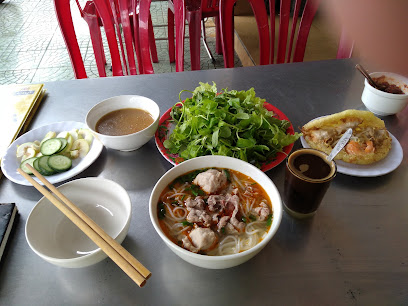
Bistro La Carambole
Discover the flavors of Vietnam at Bistro La Carambole, where tradition meets contemporary dining in the heart of Hue.

Zucca Restaurant
Experience the fusion of Vietnamese flavors with authentic Italian cuisine at Zucca Restaurant in Huế.

Sân Mây Huế
Discover Sân Mây Huế, where vegetarian delights meet tranquil ambiance in the heart of Vietnam's historical city.

Cafe on Thu Wheels
Experience authentic Vietnamese cuisine at Cafe on Thu Wheels in Hue – where delicious food meets local charm.

Golden Rice Restaurant
Experience authentic Vietnamese cuisine at Golden Rice Restaurant in Hue – where tradition meets flavor.

Markets, malls and hidden boutiques
GO! Huế
Explore the vibrant GO! Huế, a bustling hypermarket offering local goods, culinary delights, and a unique shopping experience in Huế, Vietnam.

Dong Ba Market
Experience the heart of Hue at Dong Ba Market, a vibrant marketplace filled with local delicacies, crafts, and a taste of authentic Vietnamese culture.

Quà Lưu Niệm Huế
Discover unique souvenirs and traditional crafts that embody the rich culture of Huế at Quà Lưu Niệm Huế, a must-visit gift shop in Vietnam.

Gia Huy Silk Tailor shop
Explore the artistry of custom tailoring at Gia Huy Silk Tailor Shop in Huế, where tradition meets modern fashion.

Maypaperflower - Hoa giấy Huế
Explore the exquisite world of handmade paper flowers at Maypaperflower, a charming gift shop in the heart of Huế, Vietnam.

TOKYOLIFE Huế 1
Discover the best of Huế's shopping scene at TOKYOLIFE Huế 1, a modern mall filled with trendy clothing stores and delicious eateries.

YOFASO - THỜI TRANG TRẺ NAM NỮ
Explore contemporary fashion at YOFASO, a trendy clothing store in Hue, Vietnam, blending local culture with modern styles for every traveler.

Tokyolife Huế Cơ Sở 3
Explore the vibrant Tokyolife Huế for unique fashion and accessories that reflect the essence of Vietnamese culture and style.

1969 STORE Huế
Explore the vibrant fashion scene at 1969 STORE Huế, where contemporary style meets traditional Vietnamese craftsmanship.

Bleu de Hue
Explore the rich cultural heritage of Vietnam at Bleu de Hue, where unique antiques and collectibles await every visitor.

Moss Huế - Phụ kiện Quà tặng
Explore Moss Huế, the ultimate gift shop in Huế offering unique souvenirs, stylish accessories, and local treasures for every traveler.

ALWAYS STORE - Harry Potter Vietnam Store
Discover a world of magic and fashion at ALWAYS STORE - your go-to Harry Potter store in Huế, Vietnam, filled with enchanting accessories and memorabilia.

Biluxury Huế
Discover the elegance of men's fashion at Biluxury Huế, where modern styles meet traditional craftsmanship in the heart of Vietnam.

O Quyt
Discover the heart of Vietnamese craftsmanship at O Quyt, a must-visit souvenir store in Huế for unique local treasures.

Anh Silk Shop
Explore the exquisite craftsmanship of silk at Anh Silk Shop in Huế, offering authentic Vietnamese clothing and textiles for every taste.

Essential bars & hidden hideouts
DMZ Bar & Restaurant
Discover the lively DMZ Bar & Restaurant in Hue, where delicious food, refreshing drinks, and vibrant atmosphere await every tourist.

The Chàm Craft Beer and Whisky
Discover a vibrant bar in Huế offering an exquisite selection of craft beers and whiskies in a lively and welcoming atmosphere.

Secret Lounge Hue
Experience the vibrant nightlife at Secret Lounge Hue, a hidden bar and restaurant offering exquisite cocktails and delicious cuisine in a unique setting.

AURA - Mixology & Karaoke
Discover the ultimate cocktail bar and karaoke experience at AURA - Mixology & Karaoke in Huế, Vietnam.

Brown Eyes Bar
Experience the vibrant nightlife of Hue at Brown Eyes Bar, where great cocktails and friendly vibes come together in a charming setting.

Century Beer Garden
Discover Century Beer Garden, the perfect spot in Hue for enjoying local brews and a relaxing atmosphere amidst lush greenery.

New DTV BAR
Discover Huế's nightlife at New DTV BAR, where local flavors and vibrant atmosphere meet for an unforgettable evening.

OCB Bar
Experience the vibrant nightlife and unique cocktails at OCB Bar, a must-visit cocktail bar in Huế, Vietnam.

Đông Bar - Unlock The Vibes
Discover the electrifying nightlife of Đông Bar in Huế, Vietnam, where vibrant vibes and delicious drinks await every night.

Garden Riverside Bar
Experience the vibrant atmosphere and delightful cocktails at Garden Riverside Bar in Huế, Vietnam, a must-visit for all cocktail lovers.
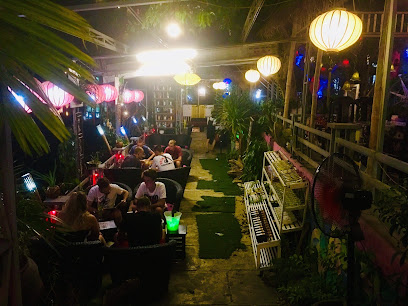
Sky Bar Vincom Plaza Huế
Sky Bar Vincom Plaza Huế: Experience breathtaking views and exquisite cocktails in the heart of Huế's vibrant nightlife.

Street Bar: Whatever You 1
Discover the vibrant nightlife of Hue at Street Bar: Whatever You, where friendly service and delicious drinks await your arrival.

Méw
Experience the vibrant nightlife at Méw, Huế's go-to bar for cocktails, local brews, and unforgettable moments in a welcoming setting.

ALITA - Lounge
Experience the vibrant nightlife at ALITA - Lounge in Hue, Vietnam, where exquisite cocktails and a lively atmosphere await.

Xà Bần Bar
Unwind at Xà Bần Bar in Huế, where vibrant nightlife meets traditional Vietnamese charm for an unforgettable experience.

Travel experiences inspired by this city
Explore more travel diariesLocal Phrases
-
- HelloXin chào
[sin chow] - GoodbyeTạm biệt
[tam byet] - YesCó
[kaw] - NoKhông
[kohng] - Please/You're welcomeXin vui lòng
[sin vwee long] - Thank youCảm ơn
[kam uhn] - Excuse me/SorryXin lỗi
[sin loy] - How are you?Bạn khỏe không?
[bahn kweh kohng?] - Fine. And you?Khỏe. Còn bạn?
[kweh. kawn bahn?] - Do you speak English?Bạn có nói tiếng Anh không?
[bahn kaw noy tyeng ang kohng?] - I don't understandTôi không hiểu
[toy kohng hyew]
- HelloXin chào
-
- I'd like to see the menu, pleaseTôi muốn xem menu, vui lòng
[toy muhn sem menu, vwee long] - I don't eat meatTôi không ăn thịt
[toy kohng an tit] - Cheers!Chúc sức khỏe!
[chuhk sook kweh] - I would like to pay, pleaseTôi muốn thanh toán, vui lòng
[toy muhn tahn twan, vwee long]
- I'd like to see the menu, pleaseTôi muốn xem menu, vui lòng
-
- Help!Cứu!
[kew] - Go away!Đi đi!
[dee dee] - Call the Police!Gọi cảnh sát!
[goy keng saht] - Call a doctor!Gọi bác sĩ!
[goy bahk see] - I'm lostTôi lạc đường
[toy lak doo-ong] - I'm illTôi ốm
[toy ohm]
- Help!Cứu!
-
- I'd like to buy...Tôi muốn mua...
[toy muhn mwa] - I'm just lookingTôi chỉ xem thôi
[toy chee sem toy] - How much is it?Bao nhiêu tiền?
[bow nyew tyen?] - That's too expensiveĐắt quá
[dat kwa] - Can you lower the price?Bạn có thể giảm giá không?
[bahn kaw te ziam zah kohng?]
- I'd like to buy...Tôi muốn mua...
-
- What time is it?Bây giờ mấy giờ?
[by zoh mye zoh?] - It's one o'clockMột giờ
[moht zoh] - Half past (10)Mười giờ rưỡi
[moo-ee zoh zoy] - MorningBuổi sáng
[bwow-ee sang] - AfternoonBuổi chiều
[bwow-ee jee-ew] - EveningBuổi tối
[bwow-ee toy] - YesterdayHôm qua
[hom kwa] - TodayHôm nay
[hom nigh] - TomorrowNgày mai
[nyai mye] - 1Một
[moht] - 2Hai
[high] - 3Ba
[bah] - 4Bốn
[bohn] - 5Năm
[nahm] - 6Sáu
[sow] - 7Bảy
[bahy] - 8Tám
[tahm] - 9Chín
[cheen] - 10Mười
[moo-ee]
- What time is it?Bây giờ mấy giờ?
-
- Where's a/the...?Chỗ...ở đâu?
[cho...uh zow?] - What's the address?Địa chỉ là gì?
[dee-ah chee la zee?] - Can you show me (on the map)?Bạn có thể chỉ cho tôi (trên bản đồ) không?
[bahn kaw te chee chaw toy (trern bahn doh) kohng?] - When's the next (bus)?Xe buýt tiếp theo khi nào?
[se bwee-ut tyep the-ow kee naow?] - A ticket (to ....)Một vé (đến ....)
[moht vee (den ....)]
- Where's a/the...?Chỗ...ở đâu?
History of Hue
-
Hue was officially founded in 1687 during the reign of the Nguyen Lords. It served as the capital of the southern provinces of Vietnam and was strategically positioned along the Perfume River. The city was initially named Phu Xuan and became a vital cultural and political hub.
-
In 1802, Emperor Gia Long established the Nguyen Dynasty and declared Hue as the imperial capital of Vietnam. The city flourished under the dynasty, becoming a center of culture, education, and politics. The construction of the Hue Imperial City, a massive complex of palaces, temples, and administrative buildings, began during this period.
-
Hue fell under French colonial rule in the late 19th century following the Treaty of Hue in 1883. Despite the colonial presence, the city retained its significance as a cultural and religious center. The French influence is evident in some of the city's architecture and urban planning.
-
The Battle of Hue was one of the longest and bloodiest battles of the Vietnam War, taking place during the Tet Offensive in early 1968. The city was severely damaged, with many historical structures, including parts of the Imperial City, suffering extensive destruction. The battle marked a turning point in the war and left a lasting impact on Hue.
-
In 1993, the Hue Imperial City and associated monuments were designated as a UNESCO World Heritage Site. This recognition helped to spur efforts to restore and preserve the city's historical and cultural heritage. Today, Hue is celebrated for its rich history, traditional crafts, and vibrant cultural festivals.
-
Hue is renowned for its traditional festivals, including the biennial Hue Festival, which showcases the city's cultural heritage through music, dance, and theatrical performances. The city is also famous for its royal cuisine, which reflects the culinary sophistication of the Nguyen Dynasty.
Hue Essentials
-
Hue is located in central Vietnam and is accessible via various modes of transportation. The nearest airport is Phu Bai International Airport (HUI), located about 15 km south of the city center. You can take a taxi or a shuttle bus from the airport to reach the city. Alternatively, you can fly into Da Nang International Airport (DAD), which is approximately 100 km away, and then travel to Hue by bus, train, or private car. Hue is also well-connected by train, with regular services running from Hanoi and Ho Chi Minh City. Buses are another popular option, with several companies offering routes to and from major cities in Vietnam.
-
Hue is a relatively compact city, making it easy to explore on foot or by bicycle. Motorbike rentals are widely available and offer a convenient way to get around. For longer distances, taxis and ride-hailing services like Grab are readily available and reasonably priced. Public buses operate within the city and connect to surrounding areas, though they can be infrequent. Cyclo rides (pedicabs) are a unique and traditional way to see the city, especially the historic areas.
-
The official currency in Vietnam is the Vietnamese Dong (VND). Credit cards are accepted in most hotels, restaurants, and larger shops, but it is advisable to carry cash for small purchases and in local markets. ATMs are widely available throughout Hue, and currency exchange services can be found at banks and major hotels. It is recommended to have smaller denominations of cash for convenience.
-
Hue is generally a safe destination for tourists. However, like any travel destination, it is important to take standard precautions. Avoid carrying large amounts of cash or wearing expensive jewelry. Be cautious of pickpockets, particularly in crowded areas like markets and tourist attractions. While Hue does not have specific high-crime areas targeting tourists, it is best to stay vigilant and avoid walking alone at night in unfamiliar areas.
-
In case of emergency, dial 113 for police assistance, 114 for fire emergencies, and 115 for medical emergencies. Major hospitals in Hue include Hue Central Hospital and Hue University Hospital, both of which offer emergency medical services. It is advisable to have travel insurance that covers medical emergencies. Pharmacies are available throughout the city for minor health issues and over-the-counter medications.
-
Fashion: Do dress modestly, especially when visiting religious sites. Avoid wearing revealing clothing. Religion: Do show respect for local customs and traditions. Remove your shoes and cover your head when entering temples and pagodas. Public Transport: Do be respectful and give up your seat to elderly passengers. Don’t eat or drink on public transport. Greetings: Do greet people with a slight bow or a handshake. Avoid touching someone's head, as it is considered disrespectful. Eating & Drinking: Do try local dishes and street food, but ensure it’s from a reputable vendor. Don’t refuse food or drink offerings from locals, as it can be considered impolite.
-
To experience Hue like a local, visit the Dong Ba Market, where you can buy fresh produce and traditional Vietnamese goods. Engage with locals, as they are often friendly and willing to share stories about the city's history and culture. Don’t miss a visit to the Imperial City, a UNESCO World Heritage Site, and take a boat ride on the Perfume River for a unique perspective of the city. Try to learn a few basic Vietnamese phrases, as locals appreciate the effort and it enhances your experience.
Trending Landmark in Hue
-
Hue Historic Citadel
-
Đại Nội
-
Thien Mu Pagoda
-
Mausoleum of Emperor Khai Dinh
-
Mausoleum of Emperor Tu Duc
-
Mausoleum of Emperor Minh Mang
-
Maison Trang
-
An Dinh Palace
-
Dong Ba Market
-
Phu Cam Cathedral
-
Meridian Gate
-
Chùa Từ Hiếu
-
Hue Night Walking Street
-
Nguyen Dinh Chieu Walking Street
-
Hue Museum of Royal Antiquities
Nearby Cities to Hue
-
Things To Do in Da Nang
-
Things To Do in Hoi An
-
Things To Do in Tam Ky
-
Things To Do in Pakse
-
Things To Do in Champasak
-
Things To Do in Savannakhet
-
Things To Do in Thakhek
-
Things To Do in Ubon Ratchathani
-
Things To Do in Quy Nhon
-
Things To Do in Buon Ma Thuot
-
Things To Do in Kratie
-
Things To Do in Nha Trang
-
Things To Do in Ha Long
-
Things To Do in Dalat
-
Things To Do in Udon Thani


















